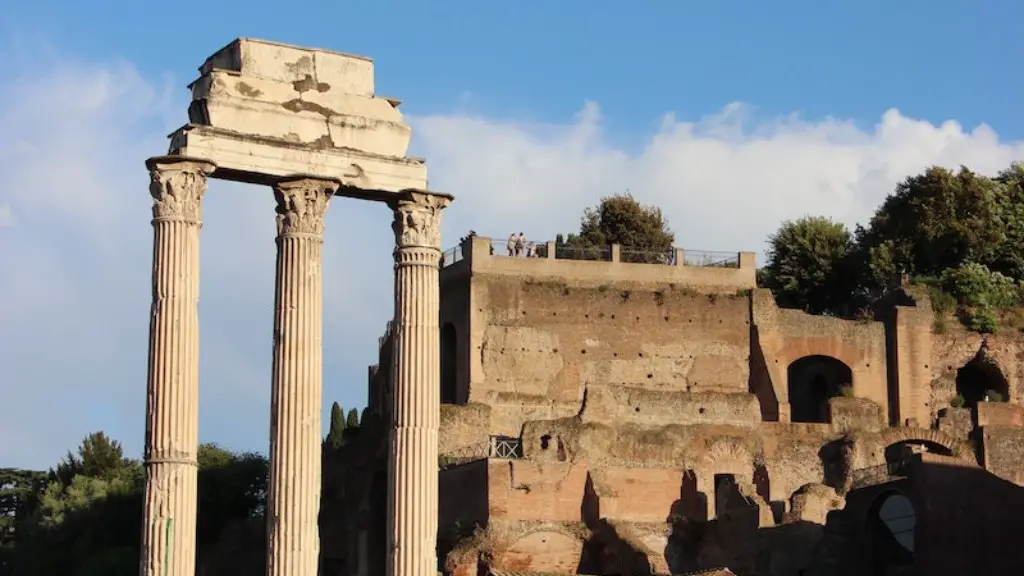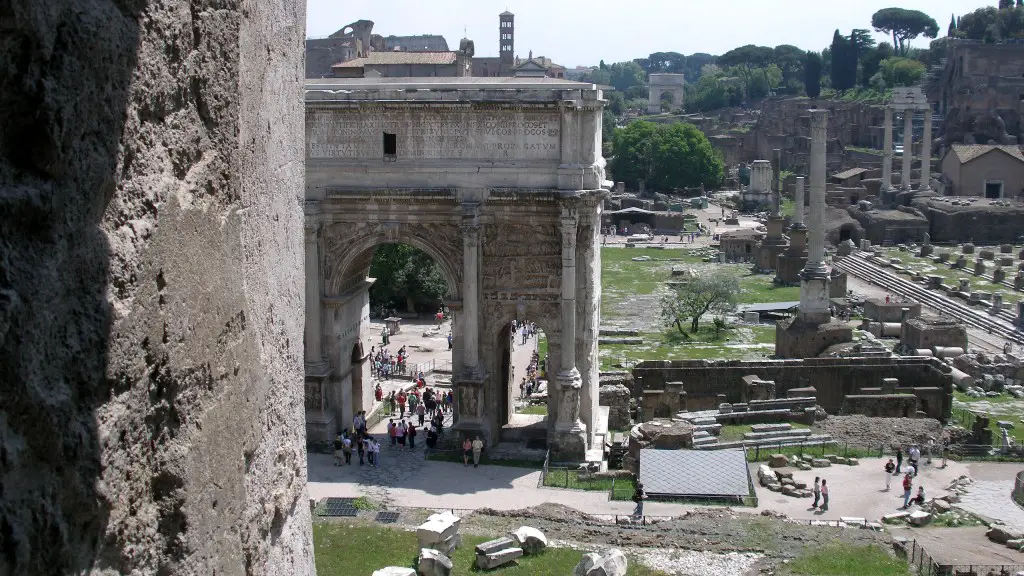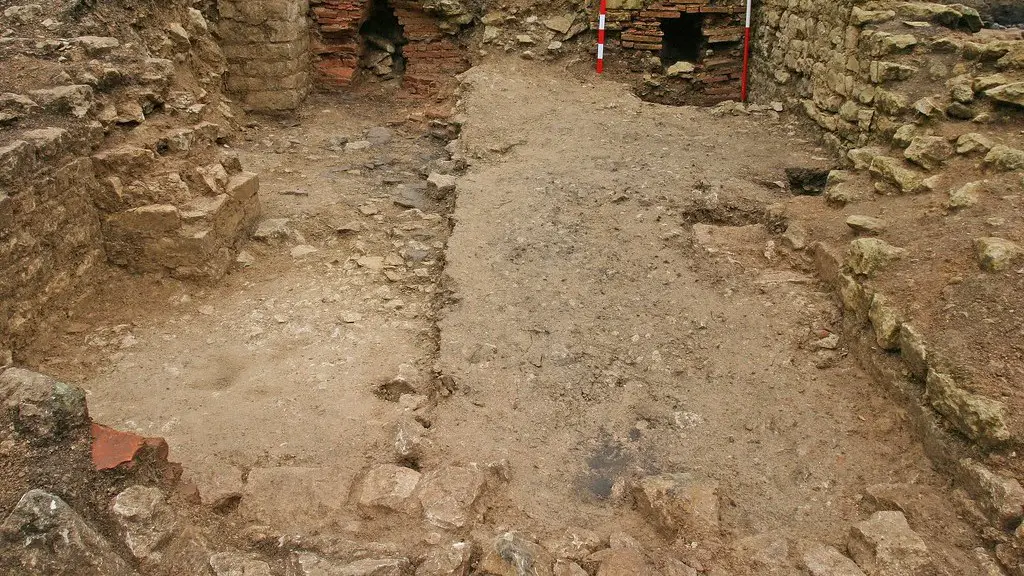Ancient Rome Entertainment – Amphitheatre
Ancient Rome was an incredibly vibrant and, in many ways, quite innovative culture. One of the unique aspects of the Roman entertainment landscape, which can still be seen sometimes today, is the amphitheatre. Ancient Rome was home to a variety of amphitheatres, both for entertainment and for a variety of other purposes.
In the earliest days of the Roman Republic, the people had to rely on their own entertainment, often in the form of plays and other performances. As the Roman Empire grew and expanded, new cultural events and entertainment venues were created. Amphitheatres were a huge part of this. They were public venues where people could go to see plays or even see gladiators battle to the death.
For the Romans, the amphitheatre was also a place for much more than just entertainment. It was a means of expressing the people’s loyalty to the state and its rulers. In the age of the Republic, senators and magistrates called citizens to meet in the amphitheatre for meetings and debates. This was the precursor to the famous Roman Forum. In the time of the Empire, the amphitheatre was a way for the emperor to show off his power and to remind the citizens of their loyalty.
One of the most famous amphitheatres in existence today is the Colosseum in Rome, which was completed by Emperor Vespasian in 80 AD. This huge stone structure could hold up to 50,000 people, and it is still an awe-inspiring sight. This amphitheatre was used to host gladiator contests, wild animal hunts, and even mock naval battles. It was a popular and well-attended entertainment venue in its day.
Ancient Rome Entertainment – Chariot Racing
Chariot racing was another popular form of entertainment in Ancient Rome. The sport is thought to have been invented by the Etruscans, who were the predecessors of the Romans. It was a hugely popular sport, and the equivalent of a modern-day football or basketball game.
Chariot racing events were held in the Circus Maximus, an ancient Greek hippodrome. The track was almost 1 km long and could hold 100,000 people. This was a very exciting form of entertainment for the Ancient Romans. Spectators would cheer for their favorite teams, and people even had professions as chariot racing pundits.
Chariot racing was also a very dangerous sport. Crashes and collisions were common, and sometimes riots would break out. The sport was known to be quite costly as well, since chariots and horses had to be specially trained and the races took up a lot of time and resources.
In the time of the Empire, chariot racing had a particular significance to the ruling class. As their power and influence grew, so did their ability to influence the sport. Laws were changed in their favor and different privileges were granted to chariots with the right symbols on them.
Ancient Rome Entertainment – Theatre
The theatre was another hugely popular form of entertainment in Ancient Rome. It was a way for people to escape the harsh realities of life in the Roman Empire. Plays were performed on temporary wooden stages in amphitheatres or even in the open air.
The plays themselves varied greatly, from comedies and drama to musicals and acrobatic shows. Some of the most famous plays of the time include the plays of Seneca and Plautus. People of all classes attended the theatre and plays were usually performed in the language of the audience.
Theatre also served a religious function in Ancient Rome. Oftentimes, plays were performed in honor of the gods. These performances brought people together and made them feel connected to a higher power.
Ancient Rome Entertainment – Games and Gambling
Along with theatre, games were also quite popular in Ancient Rome. Board games such as dice and latrunculi were popular. Gambling was also common and was not just restricted to the lowest classes – even the upper classes were known to participate. Betting on chariot races was especially popular and games were often held in gambling houses and at parties.
In the time of the Republic, games were often used as a way to teach moral values to citizens. Of course, in the time of the Empire, this practice almost disappeared. By this point, gambling had become very popular and was seen as a form of entertainment for all classes of people.
Ancient Rome Entertainment – Public Baths
Ancient Rome also had its share of leisure activities. Public baths were one of the most popular forms of entertainment and relaxation. Most large cities had a bathhouse, where people could go to take baths and socialize. The baths were often quite elaborate and offered a variety of other activities, such as athletic competitions and theatrical performances.
Public baths also served an important function for the Romans. Not only did they provide a place for relaxation, but they also served an important social function as well. People could meet and discuss current events or simply pass the time together.
Ancient Rome Entertainment – Gladiator Fights
The most popular form of entertainment in Ancient Rome was undoubtedly gladiator fights. Gladiators were professional fighters, and their fame and success was quite important to the Roman people. Gladiators would fight each other or wild animals in the amphitheatres and people would flock to watch the spectacle.
Gladiator contests were a form of political entertainment for the Roman elite. Emperors would hold gladiator fights as a way of demonstrating their power and wealth to the citizens. Gladiators were highly praised and regarded as heroes.
Ancient Rome Entertainment – Music
Music was also an important part of Ancient Roman entertainment. Musicians were highly prized and were often employed by the wealthy to entertain guests at private parties. Music was also used in public festivities, such as religious ceremonies and theatrical performances.
There were many different types of music in Ancient Rome, such as religious music, popular songs, and military marches. The music of the Ancient Romans was varied and quite sophisticated. Some of the instruments used included the flute, the horn, and the lyre.
Ancient Rome Entertainment – Circus Games
Circus games were a popular form of entertainment at the time of Ancient Rome. These events would take place in the Circus Maximus, the most famous of the hippodromes. The games were an important part of Roman culture and were seen as a way for citizens of all classes to come together.
Events such as chariot races and chariot-pulling competitions took place at the hippodrome. Other games such as discus and javelin throwing were also popular. The most popular event at the hippodrome was probably the chariot race, which even had an Emperor as a participant.
Ancient Rome Entertainment – Festivals
Ancient Rome was home to many festivals and holidays. The most important of these was the Saturnalia, a winter holiday that celebrated Saturn, the god of agriculture. It was celebrated in December and was a time of feasting and merrymaking. People gave each other gifts and most work was suspended for the duration of the holiday.
Other festivals in Ancient Rome included Lupercalia, a fertility festival, and the festival of Floralia, which was a spring festival devoted to the goddess Flora. These festivals were not only a way for people to have fun but also a way to pay homage to their gods and goddesses.
Ancient Rome Entertainment – Sporting Events
Sporting events were also popular in Ancient Rome. The Romans had their own version of the Olympic Games, which was celebrated every four years in the city of Rome. Events included boxing, running, javelin throwing, and wrestling.
Sporting events were also a way for the elite to demonstrate their power and wealth. They would often compete against each other and provide elaborate entertainment for those in attendance. In some cases, the Emperor himself would participate in the games.
Ancient Rome Entertainment – Animal Shows
Animal shows were another popular form of entertainment in Ancient Rome. People would go to the amphitheatres to watch animal fights, such as lions and bears fighting each other or gladiators fighting wild animals.
Animal shows were also used as a way to demonstrate the power of the state. Emperors would often display their power by displaying exotic animals that they had captured and tamed. It was also a way for wealthy people to show off their wealth and influence.


